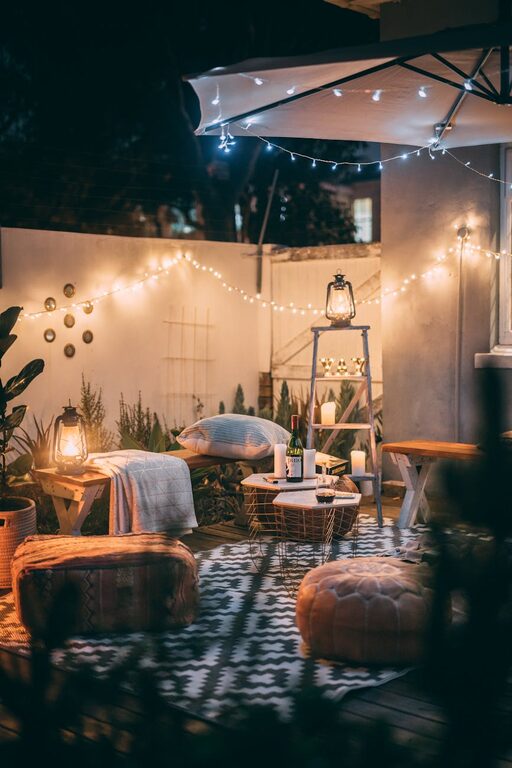Creating the perfect lighting for your home is about more than just brightness. Comfortable home lighting can transform a room, influence your mood, and help you relax or focus as needed. Whether you’re updating your living room, bedroom, or workspace, thoughtful choices in lighting will improve your daily life. In this post, we’ll share useful tips to help you pick comfortable lighting that suits your home’s style and your personal needs.
Why Comfortable Lighting Matters
Lighting impacts how we experience our spaces. Harsh or inadequate light can cause eye strain, headaches, and fatigue. On the other hand, well-chosen lighting can make your home feel warm, inviting, and functional. Comfortable lighting balances brightness and softness, creating an environment that suits your activities and enhances your well-being.
Understand Different Lighting Types
Before shopping for lights, it’s helpful to understand the three main types of lighting:
1. Ambient Lighting
This is the general, overall light in a room. It provides uniform illumination so you can see and move around safely. Examples include ceiling-mounted fixtures, chandeliers, and recessed lighting.
2. Task Lighting
Task lighting is focused light designed to help you perform specific activities, such as reading, cooking, or working at a desk. Desk lamps, under-cabinet kitchen lights, and adjustable floor lamps are typical task lighting options.
3. Accent Lighting
Accent lighting adds drama or highlights specific features like artworks, plants, or architectural details. Wall sconces, track lighting, and spotlights serve this purpose.
Balancing these types of lighting in each room creates comfortable and adaptable spaces.
Tips for Choosing Comfortable Lighting
1. Consider the Room’s Purpose and Activities
Think about how you use each room. For example, your living room might need soft, ambient light for relaxation but also some task lighting for reading or hobbies. Your kitchen requires bright ambient light paired with well-placed task lighting to cook safely.
2. Opt for Adjustable Lighting Options
Lighting with adjustable brightness (dimmers) or direction lets you customize the atmosphere throughout the day. Dimmers help reduce light intensity at night, promoting relaxation, while adjustable lamps focus light exactly where you need it.
3. Pay Attention to Color Temperature
Color temperature is measured in Kelvins (K) and influences the mood created by your lighting.
– Warm light (2700K-3000K) gives a cozy, inviting feel and works well in bedrooms and living spaces.
– Neutral light (3500K-4100K) is balanced and ideal for kitchens and bathrooms.
– Cool light (5000K-6500K) is crisp and energizing, great for workspaces or garages.
Choose the temperature that fits the room’s use and your personal preference.
4. Select the Right Bulb Type
Many bulb options exist, each with advantages in comfort and efficiency.
– LED bulbs are energy-efficient, long-lasting, and available in various color temperatures.
– Incandescent bulbs produce warm, natural light but use more energy and last less.
– CFL bulbs are energy-efficient but may take time to reach full brightness.
LEDs usually provide the best mix of comfort and economy for home lighting.
5. Avoid Glare and Harsh Shadows
Glare occurs when light shines directly into your eyes, causing discomfort. Choose lampshades, diffusers, or frosted bulbs to soften light output. Position lamps so that light doesn’t create strong shadows or sharp contrasts, which can be tiring to your eyes.
6. Layer Your Lighting
Use a mix of ambient, task, and accent lighting in each room. This layering allows flexibility—for example, dimming general lights while turning on a bright reading lamp. Layers also add depth and interest to your space.
7. Match Fixtures to Your Room Style
Lighting should enhance your room’s décor. Whether your taste is modern, rustic, classic, or eclectic, select fixtures that complement your furniture and colors. This harmony helps create a comfortable and cohesive environment.
8. Measure Your Space and Plan Placement
Before buying lighting, measure your room and decide on fixture placement for optimal coverage. For example, a chandelier should be centered and hang at the right height, while task lights should illuminate work areas without shadows.
9. Use Smart Lighting for Convenience
Smart bulbs and lighting systems allow you to control brightness, color, and schedules from your phone or voice assistant. This versatility helps you adjust lighting for comfort throughout the day and saves energy.
Final Thoughts
Choosing comfortable home lighting isn’t just about picking pretty lamps — it’s about enhancing your living experience. By understanding lighting types, considering your needs, and selecting adjustable, soft, and well-placed lights, you create spaces that look beautiful and feel good. Remember to layer your lighting, pick suitable bulbs, and make your fixtures part of your home’s personality. With these tips, your home lighting will support relaxation, productivity, and everything in between.
Feel free to share your favorite lighting tips or questions in the comments below!

